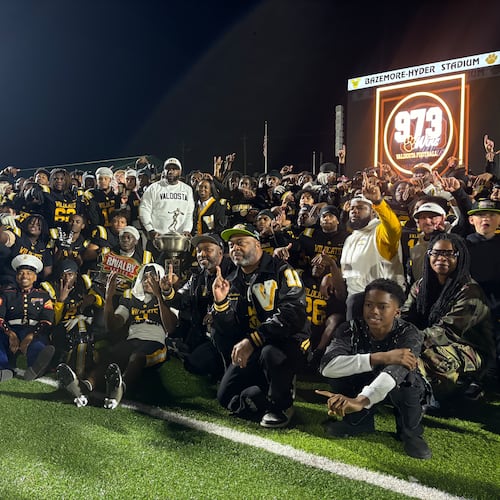As a TV sports personality for 38 years, Steve Martin has seen a lot of football.
Except, for the time in 1987 when he couldn’t find the football.
He and his crew were broadcasting a game featuring Army, which ran a triple-option offense that has similarities to what Georgia Tech runs now.
And it took only a couple of times of Martin not being able to find the ball before he realized he needed help: field glasses.
Now, he has eight pairs and always has one of them with him at every game.
But he’s not the first to be fooled by an option offense. Don’t be surprised if during tonight’s 7:45 game between No. 14 Tech and No. 20 Miami, you are watching it on ESPN and the ball goes one way, but the TV cameras show something else for a split second.
Tech’s option offense can be just as confounding to those in the camera trucks and booths as it can be to opposing defenders.
To this day, Martin, who is the play-by-play announcer for Raycom’s telecasts of ACC games, won’t watch the monitors in the booth. He will watch only the field, and that’s especially true for Tech games.
“It’s essential following that type of offense,” Martin said. “You get fooled some of the time, but not all of the time.”
Today’s broadcasts feature multiple cameras from multiple angles, so that even if the director in the truck misses the ball, it won’t take long for him to find it courtesy of one of the crew.
ESPN typically uses 10 cameras for its Thursday night telecasts, according to Mike Schwab, director of “ESPN College Football Primetime” on Thursday nights. Raycom generally uses eight cameras, according to director Roy Alfers.
When ESPN covers a game with Tech, such as last week’s against Clemson or tonight’s against the Hurricanes, they will do things slightly differently than they would when covering a team that runs a pro-set offense, for example.
The game camera, or the camera that’s used on the snaps, will go tighter on the snap as quarterback Josh Nesbitt reads the defense and decides whether to hand the ball to B-back Jonathan Dwyer, or take it himself.
This is where the directors, the guys in the production truck who decide which camera angles you see, can be fooled.
“In a normal pro-set offense, any misdirection is going against the blocking scheme, but it’s not that hard to find [the ball],” Schwab said. “In this offense, the misdirection is who is going to get the ball.
“It’s a little more challenging, but it’s an instant decision you have to make.”
While the game camera stays tight, other cameras, particularly the replay cameras stationed high in the end zones, will stay wider so that the directors can show how the plays developed and the reads made by both sides. That’s another unique aspect to working a Tech game.
The preparation for directors and camera crew begins before the game. Typically they will sit down the head coach the day before and go over a few storylines. During the production meetings before the game the director will go over the “stay wide” rule for the cameraman again, as well as other notes.
And when the ball kicks off, just like the athletes they cover, the guys in the truck and on the stands enjoy the challenge of broadcasting Tech’s offense.
“I do, because it’s a little different from what we normally see,” Schwab said. “It’s such a matchup between their offensive scheme and what their defense does against. Fun for the analysts, for the camera guys, fun for me.
“And it’s successful.”
About the Author
Keep Reading
The Latest
Featured


